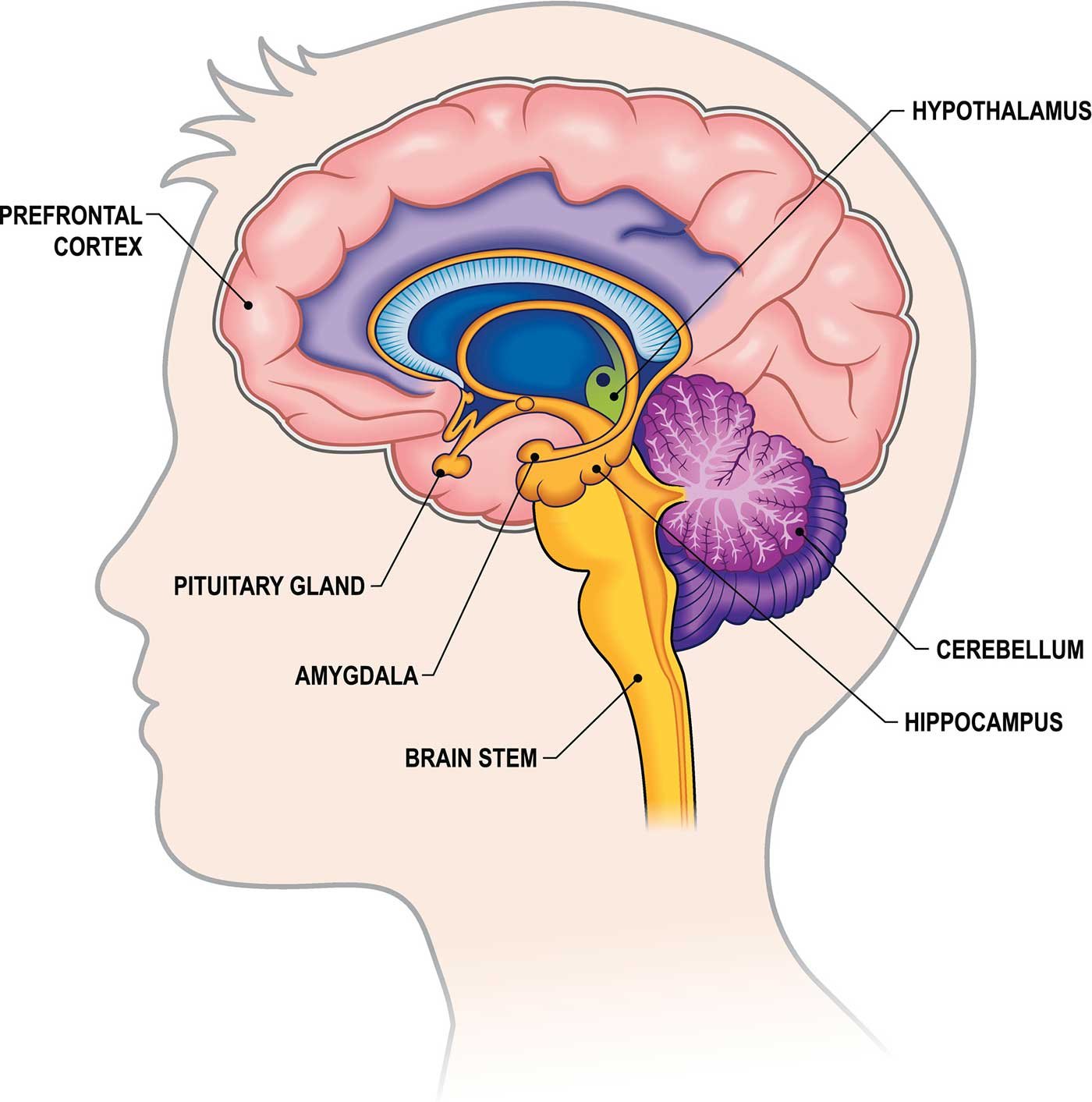Even if science isn’t your strong suit, I’ve found it helpful for my clients to understand some basic neuroscience as it relates to mental health. It helps us remember that when we get emotional, there’s nothing broken about your brain - it is literally reacting in the way that it was designed to.
The 2 parts of our brain that we’ll be talking about today are the amygdala and the prefrontal cortex. The amygdala is often called our “emotion brain” or our “lizard brain”. All animals have either an amygdala or another similar brain area that helps them learn from and activate emotional responses. Our amygdalas function as a watchtower that is constantly scanning our surroundings for a perceived source of threat. Now, I say “perceived” because unfortunately, our brains often mistake things for threats that are not actually threats.
The prefrontal cortex is also referred to as our “human brain”, “thinking brain”, or your “logical brain”. It involves emotional regulation, impulse control, delayed gratification, long-term planning, and a lot of other things that only humans do extensively on a regular basis. Long-term memory involves your prefrontal cortex, as does language and empathy.
Once a threat has been perceived, your amygdala starts ringing the alarm bells and your physical stress response kicks in. Also known as your “fight-or-flight response”, your sympathetic nervous system turns on and creates a lot of physical changes for the purpose of ensuring your survival. These changes include rapid and more shallow breathing, increased heart rate, and adrenaline & cortisol being released into your body.
When this stress response activates, your prefrontal cortex essentially goes offline. This is why it is so difficult to think clearly when you are feeling very emotional. People often talk about feeling like they can’t get their words out and being unable to control their actions. Often we can say or do things that we regret later. Dr. Siegel calls this “flipping your lid” in his Hand Model of the Brain.
When your stress response kicks in, your brain is doing exactly what it is built to do in order to try to keep you safe. However, if you have anxiety or have experienced trauma, your amygdala is overly sensitive, like a kitchen smoke alarm that goes off every time you try to cook bacon. Long term, it is important to have somatic practices to help our bodies re-learn that it is safe (assuming that is true). It is hard repetitive work to “rewire” our brains and our automatic responses. In the meantime, the best thing we can do when our lids are flipped is to step back and take a break. Set the problem side, take a couple of deep breaths, give yourself time to calm down. Ultimately you’ll be better off with your thinking brain back online instead of trying to force the issue.
